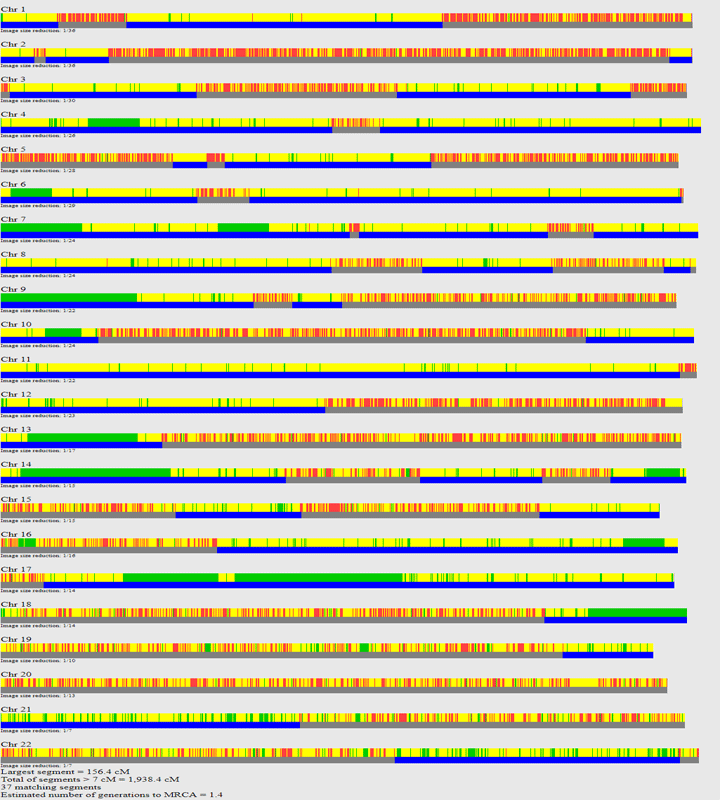One of the first things I do when helping someone with their DNA results is to check if their parents are related. This can explain unusual patterns of matches, for example, all seemingly from one side.
 GEDmatch.com has a nice tool called “Are Your Parents Related” (AYPR) in the”Analyze Your Data” blue panel (middle right of page) which looks for places in the specified kit where the DNA is identical on both chromosome pairs, maternal and paternal. This happens when you inherit the same segment of DNA from each parent because they are related. We call this a homozygous run which is a fancy way of saying a stretch of identical DNA on both sides.
GEDmatch.com has a nice tool called “Are Your Parents Related” (AYPR) in the”Analyze Your Data” blue panel (middle right of page) which looks for places in the specified kit where the DNA is identical on both chromosome pairs, maternal and paternal. This happens when you inherit the same segment of DNA from each parent because they are related. We call this a homozygous run which is a fancy way of saying a stretch of identical DNA on both sides.
CeCe Moore specializes in helping people who make this discovery. Click here for the informational brochure she helped Brianne Kirkpatrick, genetic counselor, create. It includes where to get emotional support.
My goal is to help you figure out what the DNA means yourself. Can you deduce what the relationship of those parents is? Well a very simple rule of thumb is to multiply the shared DNA from AYPR tool by four and look up that new total at the DNA painter calculator for the possibilities. Then do further family DNA testing to confirm.
Why does this work? Let’s look at the numbers. Suppose your parents share 25% of their DNA. They will pass about half of that to you, so 12.5%. However only about half of that will be the same DNA so it will show up as about 6.25% on the AYPR tool.
Look at the image. The total is 215.3 when you multiply by 4 you get 861.2. You might look that up before you read on …
